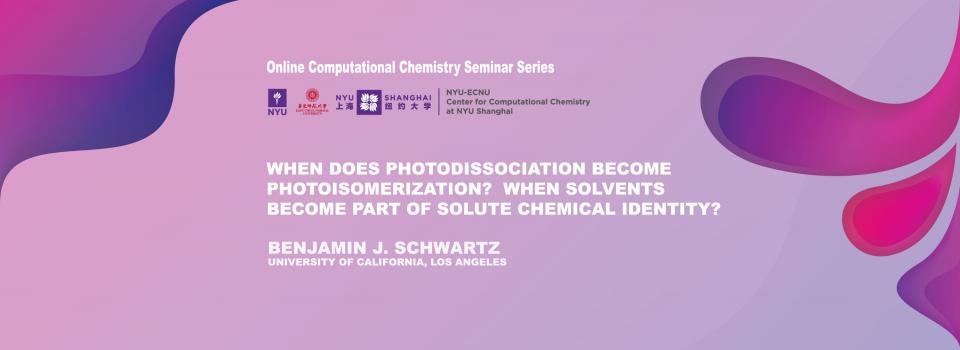
Abstract
For simple solution-phase chemical reactions, such as the photodissociation of a diatomic molecule, is it appropriate to assume that the potentials energy surfaces of the molecule are the same in solution as in the gas phase? If not, what modifications need to be made because of the solute-solvent interactions? In this talk, we explore what happens where there are relatively modest local specific interactions between a solute and solvent, with strengths on the order of that of an H-bond. By performing quantum simulations of the Na2 and Na2+ molecules in a variety of liquids, we find that the solvent not only controls the bond dynamics of the solute, but that the solvent actually becomes part of the chemical identity of the solute. For different coordination states of the solute by the solvent, there are entirely different bond lengths, vibrational spectra and electronic structure. We show that once in the solvent, photoexcitation of Na2+ actually leads to a photoisomerization reaction rather than photodissociation, as in the gas phase. We also show the chemical identity of the solute can change during the reaction, exemplifying the complexity of chemical reactivity in solution. See, e.g., Nature Chem. 10, 910 (2018); J. Phys. Chem. Lett. 11, 9230 (2020).
Biography
Benjamin J. Schwartz received his Bachelor’s degree in Physics and Chemistry from the University of Michigan in 1986, and his Ph.D. in Experimental Physical Chemistry from UC Berkeley in 1992, working under the direction of Prof. Charles Harris. After carrying out postdoctoral work in theoretical physical chemistry at the University of Texas, Austin (1993-5 with Prof. Peter Rossky) and in the spectroscopy and device physics of semiconducting polymers at UC Santa Barbara (1995-6, with 2000 Nobel Laureate Alan Heeger), he joined the faculty at UCLA in 1997. He was promoted to Associate Professor with tenure in 2002 and Full Professor in 2004. He has given roughly 200 invited lectures, published nearly 200 papers in peer-reviewed journals and holds 2 U.S. patents with an additional patent pending. Prof. Schwartz has received Teacher-Scholar awards from both the Dreyfus Foundation and the Research Corporation, and he is a Sloan Foundation Fellow. Prof. Schwartz leadership experience includes serving for 8 years as Vice-Chair of the Department of Chemistry and Biochemistry. His teaching has been recognized by his receipt of both the department’s Hanson-Dow award and UCLA’s distinguished teaching award. Prof. Schwartz served as Senior Editor for the Journal of Physical Chemistry, a position he held for 11 years, and he currently serves as Senior Editor for the Journal of Physical Chemistry Letters. Prof. Schwartz' current research interests include quantum non-adiabatic processes in condensed phases studied from both theoretical and ultrafast spectroscopic points of view, as well as studies of the fundamental processes, spectroscopy and device physics underlying the operation of conjugated polymer-based optoelectronic devices.
Seminar Series by the NYU-ECNU Center for Computational Chemistry at NYU Shanghai


